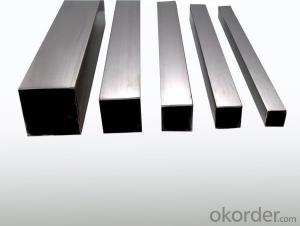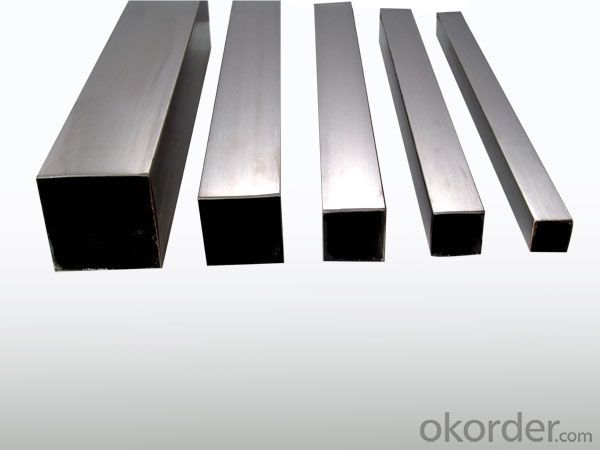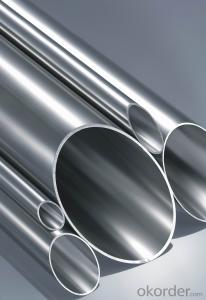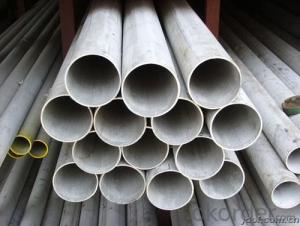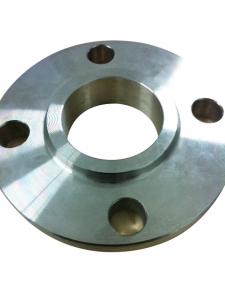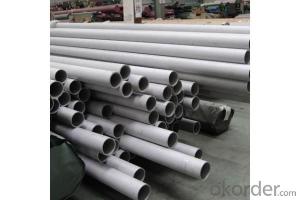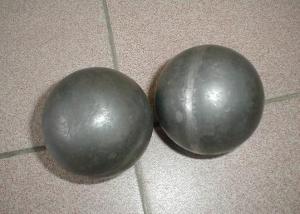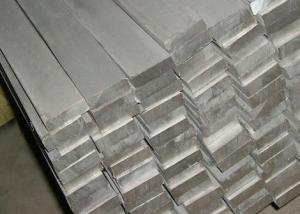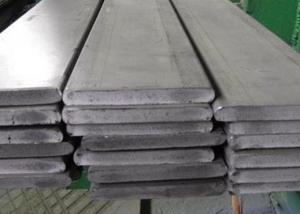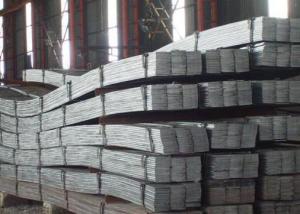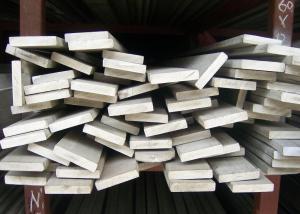stainless steel square tube
- Loading Port:
- China Main Port
- Payment Terms:
- TT OR LC
- Min Order Qty:
- -
- Supply Capability:
- -
OKorder Service Pledge
OKorder Financial Service
You Might Also Like
Quick Details
| Standard: | Place of Origin: | Model Number: | |||
| Type: | Steel Grade: | Application: | |||
| Certification: | Thickness: | Outer Diameter: | |||
| Item: | Cetification: | Welding Line type: | |||
| Quality: | Package: | Delivery: | |||
| Stock: |
Packaging & Delivery
| Packaging Detail: | In plastic wrapper/wooden case/according to your requirements |
| Delivery Detail: | In 15 days |
Specifications
stainless steel square tube/pipe
T :o.3-100mm
OD:6-1000mm
Finish: bright
Quality: Top quality tube stainless steel
stainless steel square tube/pipe
Thickness:1-100mm
Outer Diameter:10-1000mm
Welding line type: ERW
Item | High quality stainless steel tube price |
Standard | ASTM A240,GB/T3280-2007,JIS4304-2005,ASTM A167,EN10088-2-2005,etc |
Material | 310S,310,309,309S,316,316L,316Ti,317,317L,321,321H,347,347H,304,304L 302,301,201,202,403,405,409,409L,410,410S,420,430,631,904L,Duplex,etc |
Thickness | 1-100mm |
Outer Diameter | Customized |
Welding line type | welded or seamless |
Package | Standard export package, suit for all kinds of transportation, or as required. |
Price term | Ex-Work, FOB, CNF, CFR, CIF, FCA, DDP, DDU, etc |
Payment term | T/T,L/C,DP,Western union |
MOQ | 500Kg |
Application | Stainless steel tube applies to construction field, ships building industry, Stainless steel tube can be made according to the customers’ requirements. |
Contact | If you have any question, please feel free to contact us. We believe customers first! |
- Q: What are the specifications for stainless steel pipes?
- The specifications for stainless steel pipes typically include the material grade, dimensions (such as outer diameter, wall thickness, and length), and specific standards or certifications they adhere to, such as ASTM, ASME, or EN. Additionally, specifications may also include information about the surface finish, type of joint or connection, and any special requirements for corrosion resistance or mechanical properties.
- Q: What is the difference between 316 and 316H stainless steel pipes?
- The main difference between 316 and 316H stainless steel pipes lies in their carbon content. 316 stainless steel has a maximum carbon content of 0.08%, while 316H stainless steel has a higher carbon content, ranging from 0.04% to 0.10%. This slight increase in carbon content enhances the high-temperature strength and creep resistance of 316H stainless steel, making it suitable for applications where elevated temperatures are involved.
- Q: Are stainless steel pipes suitable for geothermal applications?
- Indeed, geothermal applications can benefit greatly from the use of stainless steel pipes. Geothermal systems rely on harnessing the earth's natural geothermal energy, which often necessitates the conveyance of hot fluids like water or steam. When it comes to this purpose, stainless steel pipes are an ideal selection due to their exceptional strength, resistance to corrosion, and ability to endure high temperatures. They possess the capability to withstand the demanding conditions typically found in geothermal environments, including the presence of acidic or corrosive fluids, while exhibiting a lower likelihood of degradation over time compared to other materials. Furthermore, stainless steel pipes boast excellent thermal conductivity, thereby ensuring the efficient transfer of heat in geothermal applications. All in all, one can confidently consider stainless steel pipes as a dependable and long-lasting choice for geothermal systems.
- Q: Are stainless steel pipes suitable for petrochemical plants?
- Yes, stainless steel pipes are highly suitable for petrochemical plants. They possess excellent corrosion resistance, high temperature strength, and durability, making them ideal for handling various aggressive chemicals and fluids found in petrochemical processes. Additionally, stainless steel pipes can withstand high pressure and maintain their structural integrity, ensuring the safety and longevity of the plant's operations.
- Q: Are stainless steel pipes resistant to intergranular corrosion?
- Yes, stainless steel pipes are resistant to intergranular corrosion.
- Q: Are stainless steel pipes suitable for semiconductor industries?
- Stainless steel pipes are ideal for use in semiconductor industries. They possess excellent qualities that make them widely used in various sectors, including semiconductor manufacturing. The primary reason why stainless steel pipes are suitable for the semiconductor industry is their remarkable resistance to corrosion. Given that the semiconductor manufacturing process involves the usage of corrosive chemicals and gases, stainless steel pipes can endure the harsh conditions and remain intact for extended periods. Moreover, stainless steel pipes exhibit exceptional mechanical properties, such as high strength and durability. These attributes are crucial in semiconductor industries where the pipes must withstand both high pressure and temperature conditions. Stainless steel pipes can endure these demanding circumstances without warping or breaking, ensuring the safety and efficiency of the semiconductor manufacturing process. Additionally, stainless steel pipes possess excellent cleanliness and hygienic properties, making them highly favored in semiconductor industries. Maintaining cleanliness is of utmost importance in these sectors to prevent contamination. Stainless steel pipes have a smooth surface that prevents the accumulation of particles, making them easy to clean and sterilize. Lastly, stainless steel pipes possess excellent thermal conductivity, which is vital in semiconductor industries that require precise temperature control. These pipes efficiently transfer heat, ensuring stable and accurate temperature regulation during various manufacturing processes. To summarize, stainless steel pipes are highly suitable for semiconductor industries due to their resistance to corrosion, mechanical properties, cleanliness, and thermal conductivity. They offer dependable and efficient performance, making them the preferred choice for the demanding requirements of semiconductor manufacturing.
- Q: What is the difference between seamless and electric resistance welded stainless steel pipes?
- The main difference between seamless and electric resistance welded stainless steel pipes lies in the manufacturing process. Seamless pipes are made from a solid stainless steel billet, which is heated and then stretched over a series of mandrels to create the desired shape and size. This process ensures a uniform and continuous structure without any welds. On the other hand, electric resistance welded pipes are made by forming flat stainless steel sheets into a cylindrical shape and then welding the edges together using an electric current. This results in a visible seam along the length of the pipe. While both types of pipes have their advantages and uses, seamless pipes are generally considered to have superior strength, corrosion resistance, and a smoother interior surface, making them suitable for applications where durability and cleanliness are crucial.
- Q: What is the difference between seamless and welded stainless steel pipes?
- The main difference between seamless and welded stainless steel pipes lies in their manufacturing process and the resulting characteristics of the pipes. Seamless stainless steel pipes are produced by piercing a solid billet or ingot, heating it to a high temperature, and then rolling it into a hollow cylindrical shape. This process ensures that there are no seams or joints in the pipe, resulting in a smooth and uniform surface. Seamless pipes are generally considered to have higher strength and better corrosion resistance compared to welded pipes. They are also preferred in applications where high pressure or temperature is involved, as their seamless nature makes them more reliable and less prone to leaks. On the other hand, welded stainless steel pipes are manufactured by joining two or more pieces of steel together using various welding techniques. This process introduces a seam or weld line along the length of the pipe. Welded pipes can be produced in a continuous or intermittent welding process, depending on the required specifications. While welded pipes may have slightly lower strength and corrosion resistance compared to seamless pipes, advancements in welding technology have significantly improved their quality and performance. Welded pipes are generally more cost-effective and commonly used in applications where lower pressure or temperature is involved. In summary, the difference between seamless and welded stainless steel pipes lies in their manufacturing process and resulting characteristics. Seamless pipes, with no seams or joints, offer higher strength, better corrosion resistance, and are preferred in high-pressure or temperature applications. Welded pipes, with welded seams, are more cost-effective, commonly used in lower-pressure or temperature applications, and have seen significant improvements in quality and performance. Ultimately, the choice between seamless and welded pipes depends on the specific requirements of the application and cost considerations.
- Q: What is the density of stainless steel pipes?
- The density of stainless steel pipes can vary depending on the specific grade of stainless steel used. However, the typical density range for stainless steel pipes is between 7.9 to 8.0 grams per cubic centimeter (g/cm³). This density is relatively high compared to other materials, which contributes to the strength and durability of stainless steel pipes.
- Q: How do you prevent discoloration in stainless steel pipes?
- To avoid discoloration in stainless steel pipes, there are several precautions that can be implemented: 1. Implement proper cleaning techniques: It is recommended to regularly cleanse the stainless steel pipes using mild soap or detergent and warm water. The use of harsh chemicals or abrasive cleaners that could potentially harm the surface and result in discoloration should be avoided. 2. Thoroughly rinse the pipes: After cleaning, ensure that the pipes are rinsed thoroughly with clean water to eliminate any residue or cleaning agents that might cause discoloration. 3. Steer clear of corrosive substances: It is advised to keep stainless steel pipes away from direct contact with corrosive substances such as strong acids, alkaline solutions, or chlorides. These substances have the potential to initiate chemical reactions, resulting in discoloration. 4. Apply protective coatings: The application of protective coatings, such as clear lacquer or specialized stainless steel protective sprays, can effectively prevent discoloration by creating a barrier between the metal surface and the environment. 5. Control temperature levels: Excessive heat has the capacity to cause discoloration in stainless steel pipes. Hence, it is crucial to regulate the temperature of the surrounding environment or the fluid passing through the pipes to prevent overheating. 6. Regularly maintain the pipes: Consistent inspections and maintenance should be conducted to promptly identify any indications of discoloration or damage and address them accordingly. This includes checking for leaks, corrosion, or any other factors that may contribute to discoloration. By adhering to these preventive measures, the risk of discoloration in stainless steel pipes can be significantly reduced, enabling them to maintain their aesthetic appeal and functionality for an extended duration.
Send your message to us
stainless steel square tube
- Loading Port:
- China Main Port
- Payment Terms:
- TT OR LC
- Min Order Qty:
- -
- Supply Capability:
- -
OKorder Service Pledge
OKorder Financial Service
Similar products
Hot products
Hot Searches
Related keywords
